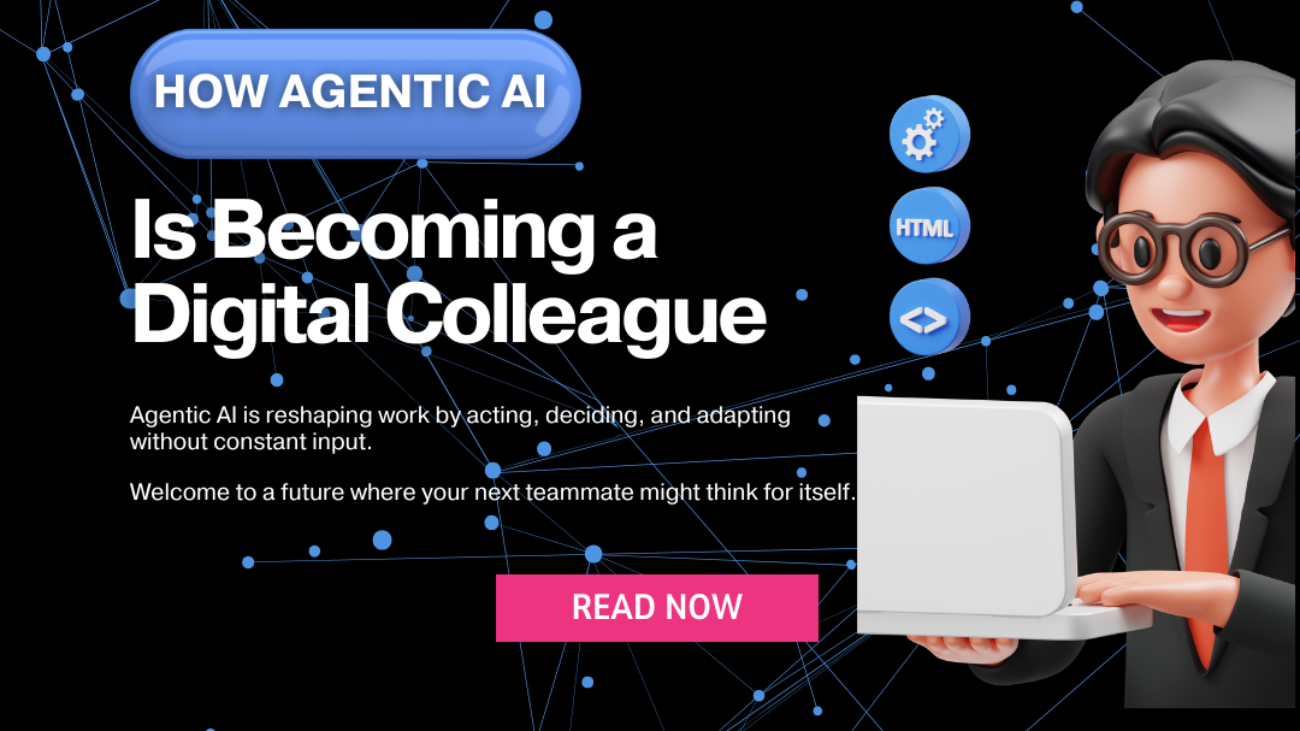Autonomous Digital Workers
In the early days of AI, we were fascinated by machines that could chat, write, or translate. But in 2025, we’re entering a radically new phase—where AI doesn’t just respond, it takes initiative. Welcome to the age of Agentic AI.
Agentic AI isn’t your average chatbot. It doesn’t wait around for commands. Instead, it acts like a self-directed teammate—capable of planning goals, executing complex tasks, and learning from results—all with little or no human input. It’s a shift from “AI as a tool” to “AI as a collaborator.”
This isn’t science fiction. It’s already happening. And it’s changing how we think about work, creativity, and intelligence itself.
What Is Agentic AI and Why Is It a Big Deal?
Think of today’s popular AI systems like ChatGPT. They’re responsive. You ask a question, and they reply—impressively, yes, but only within the bounds of your prompt.

Digital Workers
Now imagine an AI system that doesn’t just wait for your instructions, but instead:
- Identifies what needs to be done
- Breaks it into steps
- Finds the best tools to do it
- Executes the plan
- Reviews the outcome and adjusts if needed
That’s Agentic AI. It acts like a digital worker with autonomy, capable of setting goals, executing tasks, and even coordinating with other AI agents. In short, it’s the closest thing we’ve ever had to a thinking machine that manages itself.
This transformation has massive implications. We’re not just teaching AI how to generate outputs—we’re teaching it how to operate strategically, like a junior team member who takes ownership and figures things out on their own.
How Is Agentic AI Already Changing Work in 2025?
Let’s bring this idea down to Earth. Imagine you’re launching a new product. Instead of managing every detail yourself, you could assign that responsibility to an AI agent. Here’s what it might do:
- Conduct market research
- Analyze competitors and suggest pricing
- Generate a marketing plan
- Write email campaigns and social media posts
- Monitor feedback and suggest improvements
And it does all this without you having to prompt each step.

Think Tank Question
If AI agents begin making decisions that influence human behavior at scale,
what mechanisms must we build to audit their choices in real time?
How do you monitor a system that thinks faster than you can review?
In companies around the world, we’re already seeing AI-powered teams of agents managing sales pipelines, writing investor reports, automating recruitment, and even building websites. These agents don’t just execute—they decide what to execute.
This evolution is blurring the line between “using AI” and working with AI. Your co-worker could very well be a cloud-based agent that doesn’t need coffee breaks and never forgets a deadline.
Why This Shift Feels Different And Bigger
The reason Agentic AI feels so revolutionary isn’t just the tech. It’s the shift in control.
In previous AI models, humans were always at the center. The AI waited. Now, we’re seeing AI systems that can move forward without permission, within boundaries. And this raises questions we’ve never had to face before:

Think Tank Question
As autonomous AI becomes capable of coordinating with other agents, can we still guarantee that their combined actions will serve human goals?
When machines form their own logic loops, where do we draw the line of control?
- Who is accountable for an autonomous AI’s actions?
- How do we ensure it aligns with human values?
- Can we trust it to make decisions that affect people?
We’re not just building smart assistants—we’re building digital decision-makers.
And that’s both exciting and a little terrifying.
Where It’s Headed: AI Agents as Workforce Multipliers

Cognitive Expansion Units
Shortly, most professionals won’t work alone—they’ll work with a fleet of AI agents trained to handle specific responsibilities.
A solo entrepreneur could run a business with:
- A research agent
- A sales outreach agent
- A financial planning agent
- A content generation agent
Together, these form a scalable digital workforce—no hiring, no payroll, just high-speed execution and adaptive intelligence.
For large organizations, agent networks could handle entire departments—from procurement to data compliance—while human leaders step into more strategic, ethical, and creative roles.
But What About the Risks?
There’s a dark side to delegation. While Agentic AI promises freedom from micromanagement, it also presents serious ethical and security concerns.

THINK TANK QUESTION
If AI agents are taught to act independently without emotional awareness,
how do we ensure their autonomy doesn’t evolve beyond our control?
Who sets the limits when the agent writes its own playbook?
If an AI agent makes a poor judgment, who’s liable?
If agents begin coordinating with other systems, how do we prevent feedback loops or manipulation?
What happens when AI agents disagree with one another?
We’re moving into uncharted territory. Just like we set laws for human workers, we’ll need to establish governance frameworks for digital agents to ensure transparency, oversight, and accountability.
Final Thoughts: Are You Ready to Work with Intelligence That Works Back?
We’re no longer asking: “Can AI think?”
We’re now asking: “Can AI decide—and should it?”
Agentic AI isn’t about replacing humans. It’s about expanding our capacity to solve problems by delegating thinking itself. The question is not whether it will become normal, it’s how ready we’ll be when it does.
CREATED BY ZAIN MALIK | BLUE PEAKS CONSULTING

 Cart is empty
Cart is empty 
Add a Comment